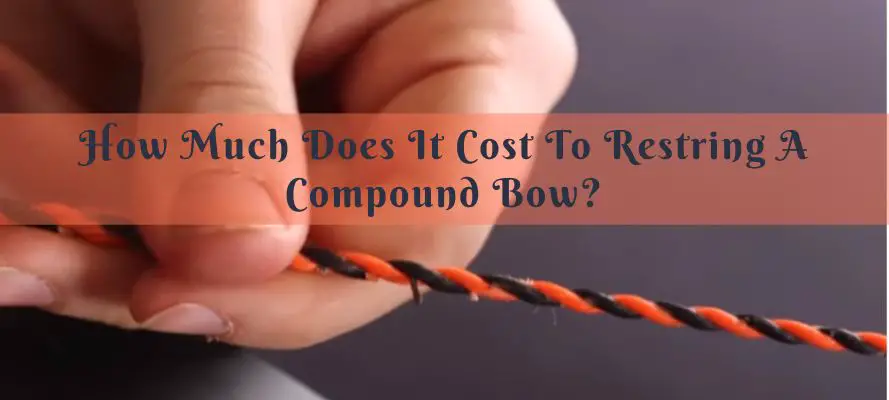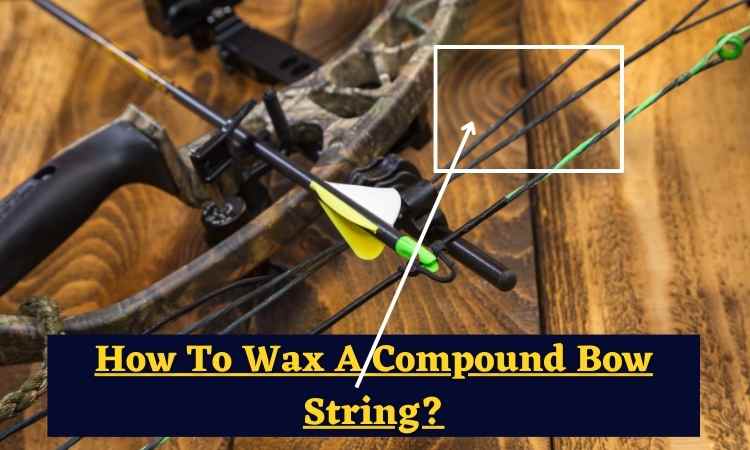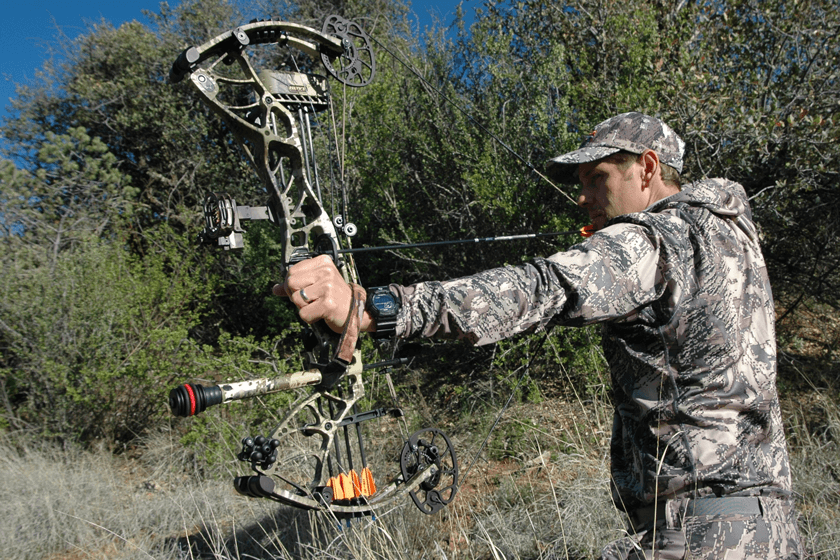Yes, a bow string can snap, which can happen due to various factors such as tension, wear and tear, or improper maintenance. Bow strings are fundamental components of archery equipment, and their integrity is crucial for accurate and safe shooting.
Occasionally, bow strings can snap under specific circumstances, causing potential hazards or inconvenience for archers. It is essential to understand the causes and implications of a bow string snapping to prevent accidents and take appropriate measures. We will explore the factors that can lead to a bow string snapping, the potential consequences, and the importance of proper maintenance to ensure the longevity and reliability of bow strings.
Whether you are an experienced archer or a beginner, this information will guide you in understanding and addressing this potential issue effectively.
The Importance Of Bow String Maintenance
Bow string maintenance plays a vital role in ensuring the optimum performance of a bow. Understanding the key role of a bow string is crucial as it is the component responsible for transferring energy from the bow to the arrow.
Several factors can lead to bow string damage and snapping. Proper care and maintenance are essential to prevent this from happening. Inadequate waxing, excessive use, and exposure to extreme temperatures can weaken the bow string over time. Regular inspection for fraying, wear, and tear is recommended, allowing for early detection and replacement if necessary.
Additionally, avoiding over-drawing the bow beyond its recommended limits can help extend the lifespan of the string. By prioritizing bow string maintenance, archers can enjoy safe and effective shooting experiences while minimizing the risk of a bow string snapping.
Signs Of An Aging Bow String
Aging bow strings can show certain signs of wear and tear. These indicators may hint at the possibility of the string snapping. String fraying or unraveling is a common visual sign. You may also notice areas with loose or broken strands.
A string that feels stiff, rigid, or loses its elasticity is another warning sign. Keep an eye out for discoloration, as it could indicate damage or decay. Additionally, frequent use and exposure to harsh weather conditions can expedite the aging process.
It is essential to inspect your bow string regularly to identify any potential issues and address them promptly. Taking proactive measures will help ensure your safety during archery activities.
The Risks And Consequences Of A Snapped Bow String
A snapped bow string can pose serious risks and consequences, both in terms of potential injuries and damage. When a bow string breaks unexpectedly, it can cause severe harm to the archer or anyone nearby. Additionally, the force of the snapped string can lead to the bow itself sustaining damage, impacting its performance and functionality.
Injuries caused by a snapped bow string can range from minor cuts and bruises to more serious lacerations or even eye damage. Moreover, the release of tension from the string can result in a sudden loss of control over the arrow, potentially causing it to misfire or veer off course.
It is crucial to regularly inspect and maintain your bow string to prevent this dangerous situation and ensure the safety of all involved in archery activities.
Preventive Measures To Protect Your Bow String
Regular inspection and maintenance routines are crucial to preventing a bow string from snapping. By regularly checking your bow string for any signs of wear and tear, you can identify and address potential issues before they escalate. Additionally, storing your bow string properly when not in use and taking care of it during storage is equally important in maintaining its durability.
Make sure to keep it in a cool and dry place, away from direct sunlight or extreme temperatures. Using string wax regularly can also help protect and prolong the life of your bow string. Remember, taking preventive measures and giving proper attention to your bow string will ensure a safer and more enjoyable archery experience.
Choosing The Right Bow String Material
Selecting the right bow string material is crucial for your archery needs. Different types of bow strings possess unique properties that affect performance. Some popular options include dacron, fast flight, and bcy-x. Dacron strings are commonly used for traditional bows due to their durability and affordability.
Fast flight strings, made from high-performance materials like spectra or dyneema, are known for their faster arrow speeds. Bcy-x strings offer a balance between strength and speed, making them ideal for compound bows. Each material has its advantages, so it’s essential to consider factors such as bow type, shooting style, and personal preference.
By selecting the proper bow string material, you can ensure optimal performance and minimize the risk of a bow string snapping during your archery sessions.
String Replacement And Timely Upgrades
A bow string snapping can occur due to wear and tear over time or excessive use. When it is necessary to replace a bow string depends on various factors such as visible signs of fraying or damage, decrease in performance, and inconsistency in arrow shots.
Upgrading to a new bow string should be considered when seeking improved accuracy, faster arrow speed, reduced noise, and longer lifespan. Factors to keep in mind when upgrading include the type of archery you are involved in, the draw weight of your bow, your shooting style, and personal preferences.
Timely replacement and upgrades can prevent accidents, maintain optimal performance, and enhance your overall archery experience. Regular inspection and maintenance of the bow string is crucial to ensure safety and achieve optimal results.
Practical Tips For Bow String Maintenance
Bow strings can indeed snap, which can be dangerous for the archer and damaging for the bow. To avoid this, proper maintenance is crucial. Cleaning your bow string regularly is important, as dirt and debris can weaken the fibers. A mild soap and water solution can be used to gently clean the string.
After cleaning, it’s essential to lubricate the string to keep it supple and prevent it from drying out. Be sure to use a silicone-based lubricant specifically designed for bow strings. In addition to cleaning and lubricating, it’s important to adjust the string tension correctly.
Improper string tension can cause the string to snap under pressure. Regularly check your string tension and make adjustments as needed to ensure a safe and smooth shooting experience. By following these practical maintenance tips, you can keep your bow string in great condition and help prevent any untoward incidents.
Common Myths About Bow Strings
Bow string snapping is a common concern among archers. However, it is important to separate fact from fiction. One misconception is that bow strings are prone to snapping easily. In reality, bow strings are designed to withstand the pressure and stress of shooting an arrow.
With proper care and maintenance, a bow string can last for a long time without snapping. Regular inspection and replacement of worn-out strings can help prevent any potential snapping accidents. It is also crucial to choose a high-quality bow string that matches the specific requirements of your bow.
By debunking these myths, we can reassure archers that a bow string snapping is not as common as some might believe.
Troubleshooting Bow String Issues
Bow string issues can arise while engaging in archery, but these problems are not insurmountable. Understanding common problems and their solutions can help troubleshoot any bow string issues. Seeking professional assistance when needed is crucial in resolving more complex problems.
Whether it’s string fraying, excessive stretching, or even a snap, there are steps that can be taken to address these issues. Regular inspection and maintenance, along with proper string care, can prevent many potential problems. If the bow string does snap, it is important not to panic – instead, consult with a professional to determine the best course of action.
Remember, with care and knowledge, bow string issues can be effectively resolved, ensuring a safe and enjoyable archery experience.
Frequently Asked Questions For Can A Bow String Snap?
Can A Bow String Snap?
Yes, a bow string can snap if it is old or worn out, if it is improperly maintained, or if it is subjected to excessive tension or pressure. Regularly inspect and replace worn-out strings to ensure safe and effective archery practice.
Additionally, using the appropriate amount of tension and avoiding over-drawing the bow can help prevent string snapping accidents.
How Do I Know If My Bow String Is About To Snap?
There are a few signs that indicate your bow string might be about to snap. Look out for fraying, visible wear and tear, or stretched out areas on the string. If you notice any of these signs, it’s crucial to replace the string immediately to prevent accidents and injury.
Regular maintenance and inspections can help you catch potential issues before they become dangerous.
Can A Bow String Be Repaired?
In general, it is not recommended to repair a snapped bow string. Once a bow string breaks, it is safer and more effective to replace it entirely. Repairing a snapped string can compromise its performance and integrity, potentially leading to further accidents or damage.
Always prioritize safety and invest in a new high-quality string for your bow to ensure optimal performance and minimize risks.
Conclusion
It is crucial for archers to recognize the potential danger and consequences that a bow string snapping can bring. While modern bows are designed to withstand significant force, it is not impossible for a string to snap under certain circumstances.
This unfortunate event can lead to serious injury or damage to the bow. Therefore, it is essential to regularly inspect the bow and its components, paying close attention to signs of wear and tear. Additionally, practicing proper maintenance techniques and utilizing quality, well-maintained strings is crucial to minimize the risk of a bow string snapping.
By taking these precautions, archers can enjoy their sport with confidence and peace of mind, knowing that they have done their part to ensure their safety and the longevity of their equipment. Avoiding complacency and staying proactive when it comes to bow string maintenance and safety is key.

General Manager & Auditorial Head.
Killian Jake is a World Sports Traveler and hobbyist sports lover. By exploring different sorts of playing modules like indoor, outdoor, and many more. As for professionalism and writing, it’s helpful to give you the right suggestions on different games and sports.




